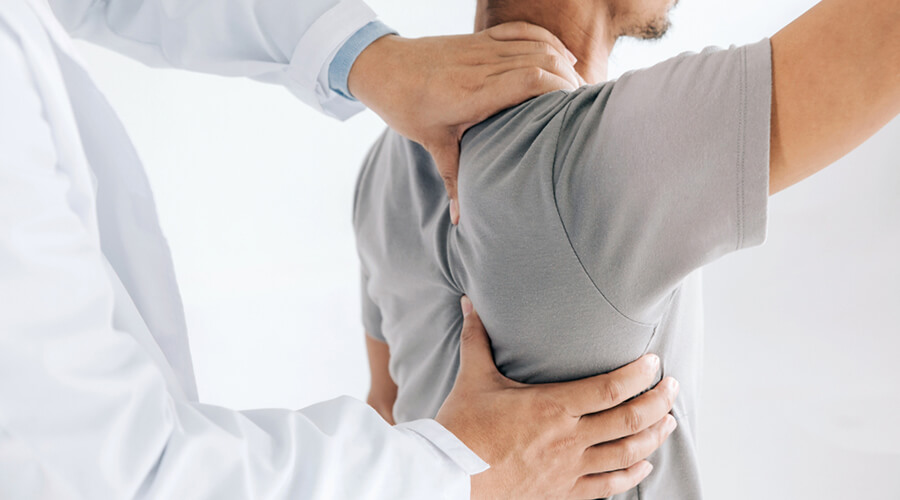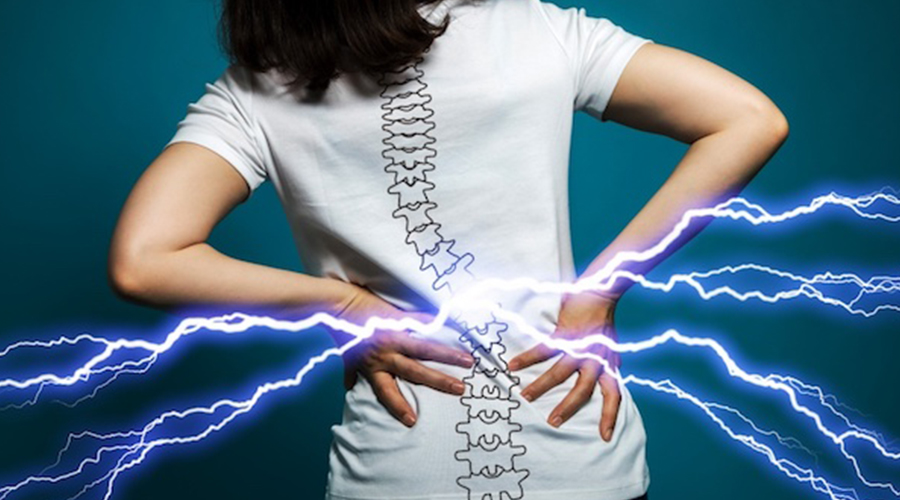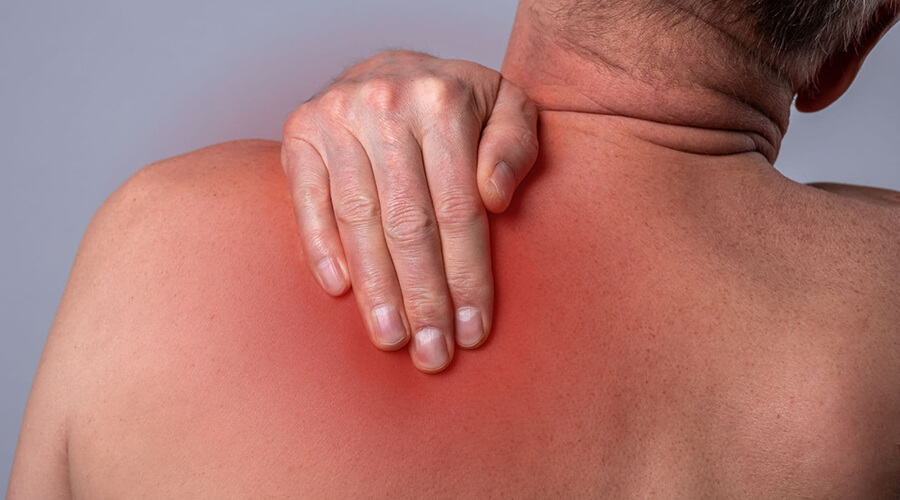
The arm may be numb or sore for several reasons. Most commonly, problems with the cervical spine can cause arm numbness.
Let’s see what the most common causes of arm numbness are
Unfortunately, you need to be alert to such problems because they can also indicate heart problems. It could also be just poor posture or even nerve damage. If the numbness is frequent, it can be a sign of several conditions, so you need to be very specific about the nature of the pain so that you can make a diagnosis. Numbness should be taken very seriously and it is worth finding out the cause as soon as possible.
Numbness, whether left shoulder numbness or left hand numbness, most often has a musculoskeletal cause.
If the pain is felt around the vertebrae of the spine, the numbness can radiate to the shoulders, back and arms. It is also possible that poor posture can cause the arm to go numb and become permanently numb. Nerve damage can also cause numbness in the legs and arms. It can also be caused by alcoholism, liver damage, diabetes, thyroid disorders and vitamin deficiencies.
Causes of arm numbness at night
Possible causes of night-time numbness may include blood disorders, diabetes, thyroid disease, peripheral nervous system disorders, nicotine addiction, joint or spinal problems, and blood pressure problems. Night-time numbness of the arms and legs usually occurs in the limbs and causes pain and discomfort at night. A medical examination is necessary to determine the exact cause.
Many people die from cardiovascular disease, which is why prevention and effective treatment should be a priority. Most heart diseases develop slowly, so if caught early they can be easily treated.
If the numbness is mainly in the left hand, or even in the whole left arm, then a cardiological examination is recommended, as there may be more heart problems behind this symptom. However, in case of left arm numbness and heart stabbing, you should consult a doctor immediately, remember that. Unfortunately, left arm numbness can also be caused by a heart attack.
Causes of left arm numbness
Left arm numbness can be caused by a number of things, including:
-narrowing of the arteries, which blocks the blood supply
-compression of the nerves, which prevents the transmission of nerve impulses
-damage to the shoulder joint, wrist, forearm or fingers
-a lesion in the spinal cord or brain, such as a stroke
-diabetes, which can damage nerves and blood vessels
-wrist syndrome
-arthritis of the shoulder joint
-other diseases such as thyroid problems, B12 deficiency.
However, a medical examination is needed to determine the exact cause of left-sided numbness.
Left hand pain or left upper arm pain can be caused by a variety of problems, the most common of which are:
Heart conditions: angina (a precursor to myocardial infarction), heart attack or other heart conditions can also cause left upper arm pain. It is usually a pressing, squeezing pain that radiates to the middle of the chest and can also radiate to the left arm, jaw, neck or back.
Injuries: pain in the left upper arm can be caused by an injury such as a sprain, bruise, fracture or sprain. Sports injuries, accidents or other physical trauma can cause this pain.
Pinched nerve: Pinched or irritated nerves can also cause left upper arm pain. For example, nerves in the neck or back can become pinched or irritated and cause pain in the left arm.
Musculoskeletal problems: Injury or inflammation of joints, tendons, muscles or ligaments can also cause left upper arm pain. For example, arthritis, tendinitis, muscle strain or torn ligaments.
Nervous system disorders: certain nervous system disorders, such as spinal or brain problems, can also cause left upper arm pain. For example, spinal hernia, neuritis or nerve damage.
What causes left arm numbness at night?
If left arm numbness occurs at night, it may be caused by:
Cervical radiculopathy: Inflammation of the nerve in the cervical part of the spinal cord, which blocks the transmission of nerve impulses.
Carpal tunnel syndrome: compression of the nerve in the wrist, which blocks the transmission of nerve impulses
Arthritis: wear and tear of the articular cartilage, which causes movement and joint pain.
Peripheral neuropathy: Damage to the nerves that prevents the transmission of nerve impulses.
High blood pressure: High blood pressure, which can damage blood vessels and therefore nerves.
Diabetes : The diabetes that can damage nerves and blood vessels
If you have severe chest pain, numbness in the left arm or numbness in the left forearm, you may even suspect a heart attack. Left arm pain and numbness can also be a serious problem.
If you go for a check-up because you have a family history of cardiovascular disease and other symptoms, you will first be asked if you have a family history of cardiovascular disease. Once a diagnosis has been made, treatment can be started and may even prevent the development of a serious disease. If the left arm numbness and pain is accompanied by a rapid heartbeat, it is important to be aware that this could be a symptom of a heart attack. This is exactly the same if the left arm numbness is accompanied by dizziness.
In most cases, the symptoms of a heart attack include:
evere chest pain, which can occur in the chest, jaw, shoulder, back, arm or forearm.
-Shortness of breath, difficulty breathing.
-Nausea, vomiting.
-Dizziness, fainting.
-Heart palpitations, rapid heartbeat.
-Chills, sweating.
-Fatigue, weakness.
If you notice symptoms of a heart attack, do not hesitate to call an ambulance!
A heart attack (angina pain or angina pectoris) is when the heart does not get enough blood and oxygen to the heart muscle, causing pain. The causes of heart stenosis can include:
Coronary artery disease: the most common cause of angina is coronary artery disease, when the blood vessels responsible for supplying blood to the heart muscle become narrowed or blocked. This can be the formation of plaques (fatty deposits) within the vessel wall, which restricts blood flow.
Myocarditis: Acute myocarditis (myocarditis) can also cause a heart attack. This can develop due to infection or autoimmune disease and can cause inflammation in the heart muscle, which can cause pain.
Insufficient blood supply to the heart muscle: Insufficient blood supply to the heart muscle can be caused by other conditions such as narrowing of the heart valves, arrhythmias or abnormal thickening of the heart muscle (hypertrophic cardiomyopathy).
Stress: insufficient blood supply to the heart muscle and consequent angina pain can be triggered by stress, excitement or anxiety.
Other factors: other causes of angina include smoking, high blood pressure, diabetes, high cholesterol, obesity, an inactive lifestyle and genetic predisposition.
Causes of right arm numbness
Right arm numbness can be caused by a number of things, including:
Nerve compression or nerve pinching: Pinching or compression of nerves in the neck or shoulder girdle area can cause numbness in the right arm. This can occur, for example, due to intervertebral disc problems, scoliosis or muscle tension.
Channel syndromes: pinching of nerves in the channels can also cause numbness in the arm. For example, carpal tunnel syndrome, where the constriction of the canal under the back of the hand can cause numbness in the hand and fingers, including the right arm.
Cardiovascular problems: Cardiovascular diseases, such as atherosclerosis or heart disease, often cause numbness, tingling or pain in the arm, especially the left arm. However, sometimes the right arm can also be affected.
Neurological problems: Neurological diseases such as neuropathy or disorders of the brain and brain nerves can also cause numbness in the arm, including the right arm.
Injuries: physical injuries such as bruises, sprains or nerve damage can cause numbness in the right arm.
Musculoskeletal problems: musculoskeletal disorders such as arthritis, muscle tension or neck problems can also cause numbness in the arm.
Right arm numbness is usually caused by a damaged nerve. It is no different from everyday hand or finger numbness. There is usually no serious problem behind it.
“My left arm is numb!, My left hand is numb! or My right arm is numb!”
This type of complaint is also most often caused by neuropathy. The most common of these is numbness due to peripheral neuropathy, which can be caused by nerve damage to the hand. In most cases, it will go away on its own, but if it is accompanied by the chest pain mentioned above, you should seek medical advice immediately.
All in all, it’s very important to prevent real trouble, so a check-up can’t hurt anyone.





























